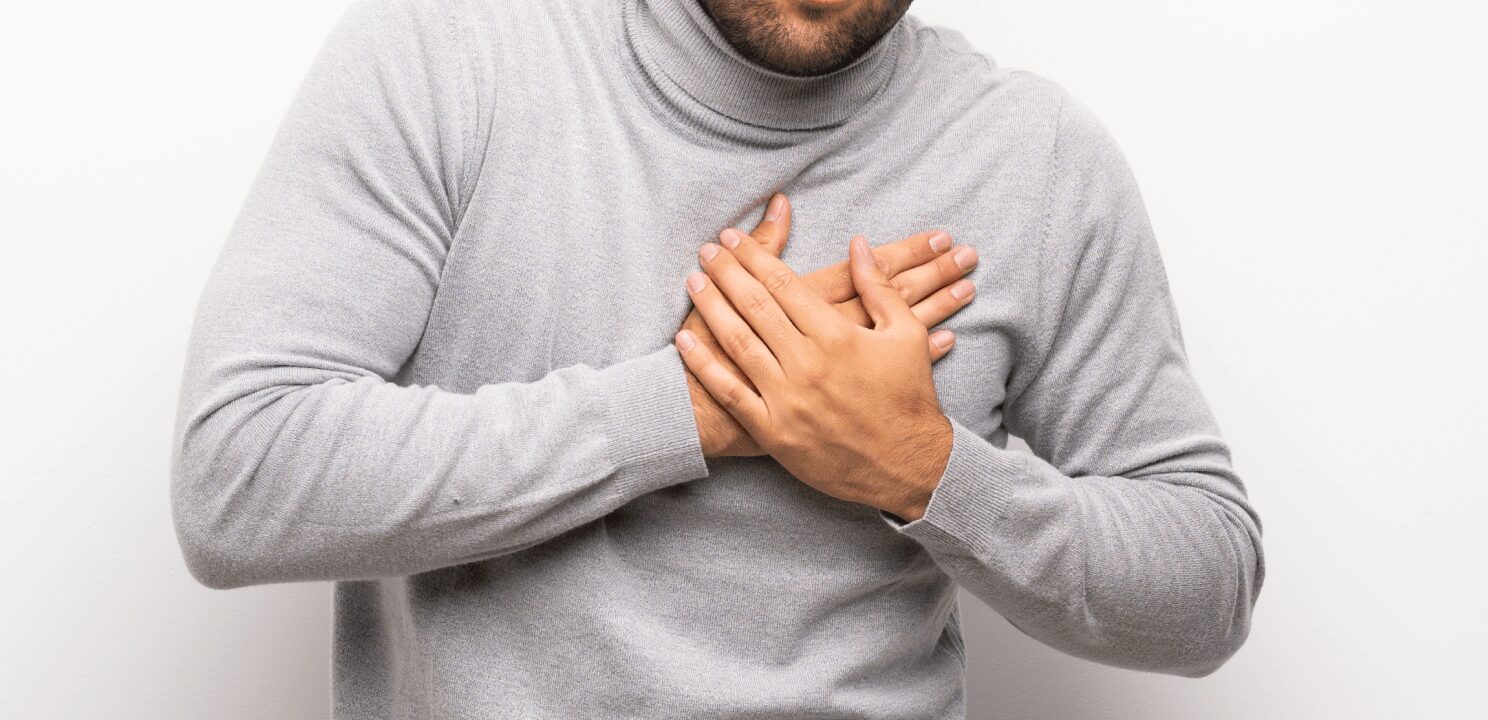
What is Chest Wall Pain?
Chest wall pain refers to discomfort or pain that originates from the structures in the chest, such as the muscles, bones (ribs or sternum), or cartilage, rather than from the heart or lungs, and may cause tenderness. It is often aggravated by movement, deep breathing, or pressure applied to the affected area.
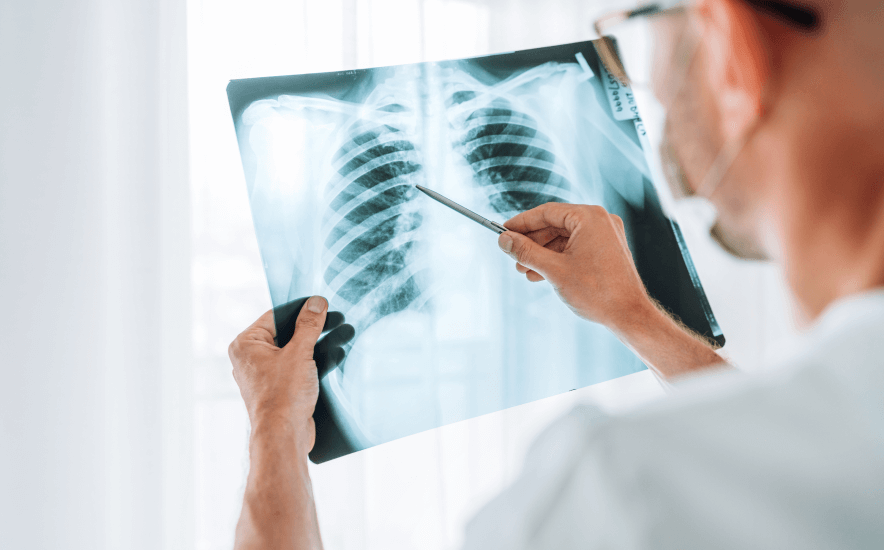

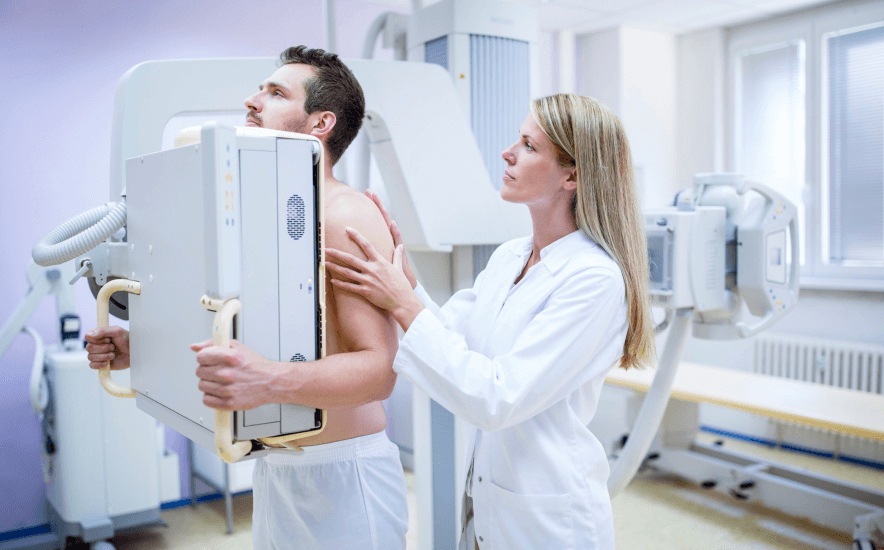
Related Diagnoses

Post-Traumatic Pain

Costochondritis
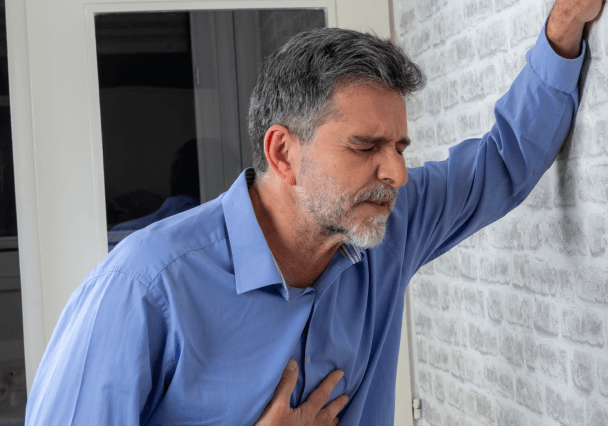
Intercostal Neuralgia
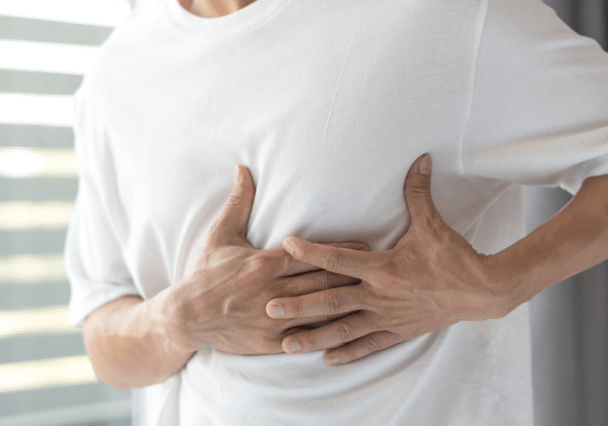
Herpes Zoster Syndrome
Expanded Guide
- Post-Traumatic Pain: Post-traumatic chest wall pain refers to discomfort or pain in the chest that results from physical injury or trauma. Common causes include blunt force trauma, falls, motor vehicle accidents, or impacts from sports injuries. One of the most frequent reasons for post-traumatic chest pain is rib fractures, which occur when one or more ribs are cracked or broken due to a direct blow or pressure on the chest. Rib fractures can cause significant chest wall pain, often described as sharp, severe, and worsened by breathing, coughing, or movement. Depending on the severity of the injury, the pain can last for weeks or even months, and multiple fractured ribs can lead to additional complications like difficulty breathing or lung injury (such as pneumothorax or bruising of the lungs).
- Costochondritis: Costochondritis is a specific type of chest wall pain that occurs due to inflammation of the cartilage that connects the ribs to the sternum (breastbone). This condition typically causes sharp or aching pain in the front of the chest, which may be mistaken for heart-related pain. The discomfort often worsens with deep breathing, coughing, or physical activity and may radiate to the back or abdomen. Costochondritis is often caused by repetitive physical activities, trauma to the chest, or even respiratory infections, but in many cases, the exact cause remains unknown. The pain is generally localized to the affected area and can be reproduced by pressing on the chest, helping to distinguish it from other causes of chest pain, such as heart or lung problems.
- Intercostal Neuralgia: Intercostal neuralgia is a type of chest wall pain that results from irritation or damage to the intercostal nerves, which run between the ribs. These nerves can become inflamed or compressed due to various causes, such as trauma to the chest, surgery (including thoracic or rib surgery), viral infections like shingles (herpes zoster), or conditions that put pressure on the nerves, such as tumors or herniated discs in the spine. The pain from intercostal neuralgia is often sharp, shooting, or burning and may wrap around the chest in a band-like pattern, following the path of the affected intercostal nerves. It can be triggered or worsened by movements such as twisting, deep breathing, coughing, or even touching the skin over the ribs. In some cases, the pain may also be accompanied by tingling, numbness, or hypersensitivity in the chest area.
- Herpes Zoster Syndrome: Herpes zoster syndrome chest wall pain, commonly associated with shingles, occurs when the varicella-zoster virus (the same virus that causes chickenpox) reactivates in the body, affecting the nerves in the chest. Shingles can develop years after a person has had chickenpox, particularly in older adults or individuals with weakened immune systems. The virus reactivates and travels along the nerves, causing inflammation, pain, and a distinctive rash. When herpes zoster affects the nerves around the chest and upper back, it can result in severe chest wall pain. This pain is typically sharp, burning, or stabbing and can follow a dermatomal pattern (a band-like distribution corresponding to the affected nerve). The pain usually precedes the appearance of a painful, blistering rash that follows the same nerve path. In some cases, the pain can persist long after the rash has resolved, a condition known as postherpetic neuralgia, which can be a chronic form of nerve pain lasting for months or even years.
Frequently Asked Questions
Have more questions? Schedule a consultation with Dr. Patel to gain additional insights and discuss treatment options. We are committed to advancing your health through patient education and a safe, minimally invasive approach.
Chest wall pain is diagnosed through a combination of a patient's medical history, physical examination, and, if necessary, imaging tests. During the physical exam, a healthcare provider will assess the location, nature, and intensity of the pain, often pressing on the chest wall to reproduce symptoms, which helps differentiate chest wall pain from heart or lung-related issues. The provider will ask about recent injuries, activities, or infections that could have triggered the pain. To rule out other causes of chest pain, tests such as X-rays, CT scans, or MRIs may be used to detect rib fractures, muscle strain, or other structural abnormalities. In some cases, blood tests or an ECG may be conducted to ensure that the pain is not related to heart problems. Once other serious conditions are ruled out, a diagnosis of chest wall pain can be confirmed.
Treatment for chest wall pain focuses on addressing the underlying cause and relieving symptoms. Common options include rest, over-the-counter pain relievers like acetaminophen or nonsteroidal anti-inflammatory drugs (NSAIDs), and applying ice or heat to reduce pain and inflammation. For more severe pain, prescription medications, including muscle relaxants or nerve pain medications, may be recommended. Physical therapy or gentle stretching exercises can also help alleviate pain, especially in cases involving muscle strain or tension. If the pain is related to nerve issues, such as intercostal neuralgia, nerve blocks or other interventional therapies may be used. In cases of rib fractures, proper pain management is essential to enable deep breathing and prevent complications like pneumonia.
The duration of chest wall pain depends on the underlying cause and severity of the condition. Mild cases, such as muscle strain or costochondritis, may resolve within a few days to a few weeks with proper rest and treatment. More severe causes, like rib fractures, can take several weeks to months to fully heal. In some cases, especially if nerve involvement is present, such as with intercostal neuralgia or postherpetic neuralgia from shingles, the pain can persist for months or even become chronic. Most cases improve with time and appropriate treatment, but ongoing pain beyond a few weeks may require further medical evaluation.
Chest wall pain can lead to complications, particularly if left untreated or if the underlying cause is severe. For instance, rib fractures can result in lung complications, such as pneumothorax (collapsed lung) or pneumonia, due to difficulty in deep breathing caused by pain. Chronic chest wall pain, especially from nerve-related issues like intercostal neuralgia, can affect a person’s quality of life, leading to prolonged discomfort, restricted movement, or sleep disturbances. In some cases, severe or ongoing pain may contribute to anxiety or fear of heart-related conditions. Proper diagnosis and treatment are essential to prevent these complications.
Gramercy Center
Take the first step towards a healthier life by scheduling your initial consultation with Dr. Patel. At our clinic, we specialize in minimally invasive procedures that offer faster recovery, improved function, and decreased pain. Our client-centered approach ensures that you receive the highest quality care tailored to your unique needs. We look forward to offering you an exceptional experience.
